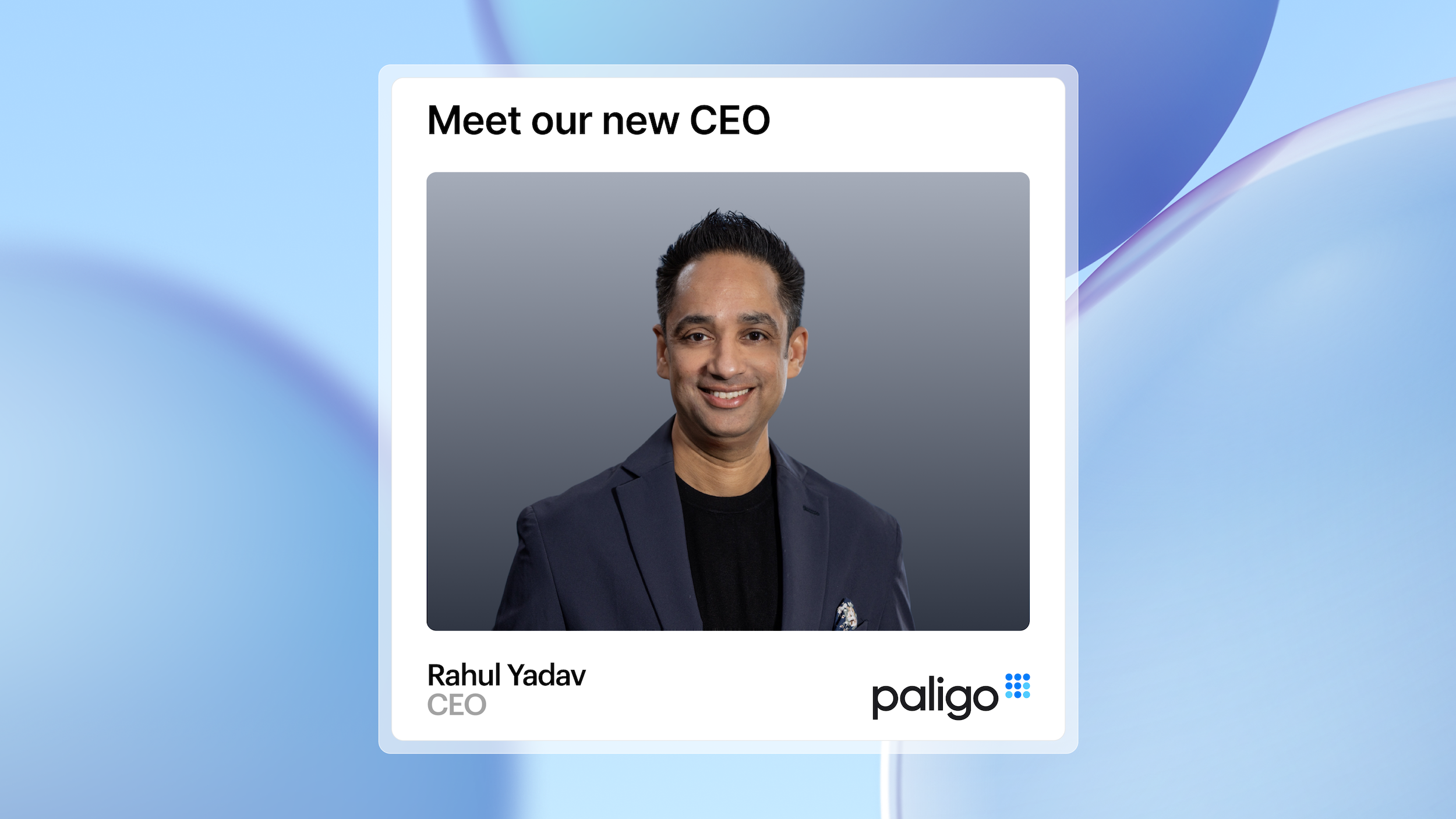Winning Buy-In for Content Migration: A Stakeholder-by-Stakeholder Playbook

Migrating your content to a new component content management system (CCMS) or content delivery platform (CDP) is often viewed as a huge challenge. After all, there are new tools to learn, such as new authoring and publishing environments, as well as new technology needed to perform the content migration.
Then there’s the change management required. The tricky part about a content migration is not necessarily finding the right tools to do it or running the actual migration. The trickiest part is convincing people it needs to be done.
Getting the right people on board and convincing them that the migration is worth the cost and effort can be difficult, but it’s not impossible. Not if you prepare ahead of time and address the key questions and concerns of each role you need buy-in from. And there are a few different stakeholders who need to support you, including your technical writing team lead, department lead, Head of Product, VP of Finance or Chief Finance Officer (CFO), and the C-Suite (CEO, CTO, or CIO).
Josh Anderson, Information Architect at Paligo, and Fabrice Lacroix, CEO of Fluid Topics, want to help you get your content migration approved. In the webinar, Migration Myths: Faster, Easier and More Fun(!) Than You Think, they take a look at each stakeholder role and the concerns they have, and then provide advice for how you can respond to get their support. We’re sharing their advice here.
Let’s dive in.
A Step-by-Step Guide to Product Knowledge Documentation in a CCMS
Develop a comprehensive understanding of product knowledge documentation.
Technical Writing Lead
You’re a technical writer and you know things need to change. But you also know that writers don’t always want to learn a new system or process. Maybe they are already struggling with the tools they have, and they think that trying to learn something new will take too long and too much effort.
Your technical writing team lead wants to do what’s best for their team, so the key to getting them (and the rest of the team for that matter) on board is to focus on the benefits of a better authoring experience. Show them that a code-free authoring view, one that creates well-formed Docbook XML in the background (like Paligo does) will allow them to take advantage of structured authoring and XML without having to get into the weeds of writing it.
Explain that a modern authoring experience is as easy as using Microsoft Word or Google Docs, but you get the benefits of structured content, tagging, filtering, and more. Better yet, show them, Josh said. Research and find a system that works best for your organization’s goals, then reach out for a demo. If you like what you see, request a one to two-week pilot and test the system again on one or two key use cases.
Let’s say we create support documentation. Can I do that inside the new system? Let me just try that out for a week or so. And if you can prove to yourself that you can meet the use cases that you have, and you can show that to your team lead, I think that will go a long way in demonstrating that this is the right move, and you’ll be able to get them on your side.
Once you have shown your team lead that a content migration to a modern authoring and publishing tool will help the team be more efficient and support more publishing formats and channels, it’s time to move on to the Department Lead.
The Department Lead
You have your team lead on board. Now you need to get buy-in from your Department Lead. Whether your technical team lives in the marketing, product, or support department, the Department Lead will have the same concerns.
The Department Lead will consider the time required to purchase the new system or the time needed to migrate content to it. They may also have concerns about having the resources or the skills for the migration. Will you need to hire consultants or experts to help? For this stakeholder, it’s about resources, budgets, and time.
The key to convincing your Department Lead is to explain that the migration doesn’t have to take a long time, and that a faster migration leads to immediate improvements in the technical writing team’s user experience.
For example, Josh said if you already have content in XML format, then the migration isn’t going to take a long time. If you’re migrating from DITA XML to Docbook XML, then you know there are tools available that can do the conversion. He explained that the conversion might not be perfect and you may have to do some massaging, but the bulk will convert quicker than you realize.
One way to deal with the time required to migrate, is to not migrate everything at once. Migrate one publication at a time, or focus on the content in one department, selecting a subset of content and get started. Fabrice said that shorter migration projects deliver results faster because they don’t take as long or need a lot of resources.
Plus, the lessons you learn from the first migration will give you a feel for how the rest of the migration will go. You may find that you do have the resources and skills in-house and it won’t be as hard as you initially expected.
Also, having modern tools readily available that can ingest and transform the existing content formats into new formats is important, Fabrice said.
For example, let me take a set of files and show you how I can load that into our new system and how ninety percent of that is done in matters of hours. At the end, you might need to massage that content, re-adapt it, chunk it further, retarget it to make it more adapted to what you aim to do next. But you have to show that it’s going to be easy. That you aren’t going to have to copy-paste everything into the new system and rewrite everything.
You can also consider leaving older content in its legacy format in the new system. If you are no longer updating it, migrate it as is, as it will be faster.
The key to getting the Department Lead on board is to think strategically, and be tactical. Talk about new products or product updates and the documentation that needs to be updated along with it. Know what content is most important to migrate and when. Spending months migrating everything just to have the same content, and then need to quickly update it doesn’t make sense. Show your Department Lead how you can balance the efforts so the migration pays back faster.

Head of Product
Up to now you have been trying to convince people that are directly connected to the content migration strategy. Now, you’re talking to a stakeholder who might see technical documentation as necessary, but not in their mission.
The Head of Product looks at things that don’t directly support their work as something to be avoided. This person may be afraid the change will impact their ability to release a new product or product updates on time. This concern is especially true for software and manufacturing companies that are releasing updates more often (some software companies release updates every month). The Head of Product will be reluctant to support any changes that could slow down their own processes and ways of working.
The key to getting support here is showing them that switching to modern tools will not slow things down, but do exactly the opposite.
Explain that if you migrate content as part of a product update process, the work will not be frozen for months. Instead, content is migrated as needed. For new products, you can directly create content in the new system.
Another way to convince your Product Lead relates to other documentation. If you are migrating from a tool that combined authoring and publishing to a modern tool that decouples the two (like Paligo + Fluid Topics), you’ll find that you can use the new publishing tool for other content as well, like your API documentation written in Swagger, or your knowledge base content currently written in markdown and stored in GitHub. A solution that supports the ability to get all types of content into the hands of your customers is something your Product Lead can support.
Modern tools like CCMSs and CDPs enable you to streamline both the authoring and the publishing process.
Fabrice explained it this way:
By adopting this modern strategy and this new tool, you can explain to your Head of Product that not only will they benefit from a better tool that’s faster for writing the new versions of the documentation due to content reuse, content variants, and better metadata management, but by also having a CDP in place, you will be able to get more content, different formats from different sources, different types of content being published, being created, being managed in parallel so it’s faster as well.
You can also explain that using a modern tool enables the technical writers to update content more often and publish it immediately. Fabrice provided the example of a software company that could only release one or two versions of their product a year because the technical documentation took up to four weeks to generate the PDFs and HTML content. When they switched to Fluid Topics, they were able to start delivering content on the fly. So as the product team delivered a new version, the tech docs team could publish updated content at the same time.
The key to getting support from the Product Lead lies in showing them that it will improve their processes as well. Once you do that, it’s time to move on to the CFO.
Chief Financial Officer/VP Finance
Convincing the CFO or VP of Finance is probably the toughest job. This person thinks the costs of migration will be high, including both the technical and the time and resources required to perform the content migration. Your job is to show them that there are already costs associated with how the technical documentation team works today and how the migration will reduce those costs.
If your technical documentation team is using Word/Google Docs, there are licensing costs for those tools. There are also licensing costs for using other legacy content management tools. Along with direct licensing costs, there are other costs associated with using unstructured or legacy authoring tools. In these cases, you’ll need to show the costs exist when there is no line item in the budget.
Show the CFO the hidden costs like the time to create copies or variants (including fixing or updating those copies), including translated versions. Talk about the work required to create multiple formats, like PDF and HTML and the effort to publish that content to the appropriate channel.
The CFO needs to see the ROI of the content migration. You need to surface all the costs to doing business as usual and how you can reduce them, even if you do create a new budget line item.
“What I see as a huge challenge is that you are, in many cases, creating a new budget line. But in fact, this budget line is just making visible something that already exists, and sometimes it’s way more expensive than the cost of the tools,” said Fabrice.
Josh suggested to flip things around and ask, “can we justify the cost of doing things the way we are today? Can we continue on this path?” Consider giving the CFO a demo that shows how much faster you can perform a key use case, and how much money is saved as a result.
When you move to a new system you will see cost savings due to an increase in author efficiency, he said. How long does it take to produce a topic or a document today? How many people are involved and how much of their time does it require? How much does each person make an hour? With a little bit of effort you can build rough estimates and show ROI.
Translations are a good use case to prove the value of a content migration to your CFO. Even if translations are still on the roadmap, you can show how a modern system, like a CCMS can set you up for success when the time comes. For example, you can show how easy it is to export topics to XLIFF (the industry standard for translation and localization), or how the system can integrate with leading translation providers, enabling you to easily send topics for translation.
When you send structured content for translation, you only need to send the topics that require translation, not the entire publication. You can also leverage translation memory. Translation providers use translation memory to store previous translations, which means they do not have to translate the same content again (they simply retrieve it from memory).
The reduction in support tickets is another use case you can provide. Well-organized, robust content that is easy to navigate goes a long way in helping users solve their problems and avoid spending time on support calls or emails. Again, you can show the savings in time and costs of your support team by having improved technical documentation in your knowledge base or Help Center.
The key to ultimately convincing the CFO is to build a business case that illustrates the numbers. What are your business goals, and are they being met with the content as it’s currently produced? How can the new system help them reach those goals? For example, will it help publish many different types of content or content in multiple formats for different channels? Can production time be reduced by taking advantage of content reuse? Can it help customers find answers quicker?
These are the things the CFO needs to understand because they tie back to the company’s financial situation. Anything that can improve the finances is a win for the CFO and the company and they will quickly offer their support.
Paligo's Fluid Topics Integration Explained
Discover the benefits for your team and your organization when integrating Paligo with Fluid Topics.
The C-Suite (CEO, CIO, CTO)
You’ve made it past your Technical Writing Team Lead, your Department Head, the Head of Product, and the CFO, but now you need to convince the C-Suite. And this group is as far from what you do as possible.
The C-Suite doesn’t see your work as core to the business. Sometimes, it seems like they don’t see content as important at all. But you know it is, because it’s content that brings customers to your site and to your product.
A couple of stats Josh and Fabrice shared to prove this point:
- 74% – That’s the number of B2B customers that review user documentation as part of their purchase process.
- ⅔ – This is the number of B2B buyers that said the most useful type of content to aid their purchase decision was content that talked about product specifications and functionality (content that is suited for CCMS and CDPs).
- 77% – This is the number of people who view organizations more positively if they offer self-service support options (and you know content is the foundation of self-service support).
The C-Suite is also numbers-oriented, just in a slightly expanded view from the CFO. Josh said to look at the money marketing spends creating brand and market awareness.
You can throw all the money you want at paid search ads, but if you don’t have content, right? What are they clicking on? What are they getting to? You need to establish that presence through content. You need to get your name out there, and it’s content that will help you do that.
The technical writing team is already creating this content. Technical content contains the keywords customers search for. It contains the features and functionality they want to learn about. Show the C-Suite how, if that content is made publicly available in a highly indexable search engine, it can give customers and prospects the exact information they need to make a decision to purchase and use your product(s).
One other selling point that will get the C-Suite on board fast:
One other thing I think we should point out is that when you adopt single sourcing, you can really promote consistency throughout your whole content corpus. And this will reduce the chance that maybe an outdated variation of content exists somewhere, protecting the organization from potentially expensive lawsuits or other troubles. The C-Suite might be interested in knowing that you’ll have a way of maintaining that consistency throughout all the content.
Wrap Up
Getting cross-organizational buy-in for a modern technical documentation authoring and publishing system doesn’t have to be complicated. When you tailor the message to each stakeholder, including the Team Lead, Department Lead, Head of Product, CFO, and the C-Suite, you replace concerns about resources, effort, and costs with clear, measurable upside. Whether it’s a CCMS and CDP, or a CCMS alone, you can migrate in sprints, build reusable content, and publish richer, searchable documentation exactly when you need it.
And remember, when the numbers show that great documentation wins customers, approving your migration becomes the obvious business decision. Start with a small pilot, track the gains, and watch the buy-in follow.
Watch the complete webinar on-demand to hear more from Josh and Fabrice.
Get started with Paligo
Paligo is built to meet the most demanding requirements, with plans made for any company from the growing SMB to the large Enterprise.
Share
Author

Barb Mosher Zinck
Barb Mosher Zinck is a marketing strategist and technology writer with 20+ years of experience helping SMBs and enterprises navigate content management, marketing automation, and sales processes. With a foundation in IT and a passion for implementation, she combines strategy and execution to deliver impactful marketing and technology solutions.




